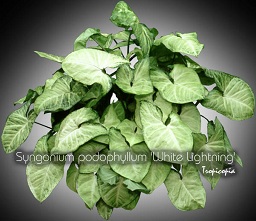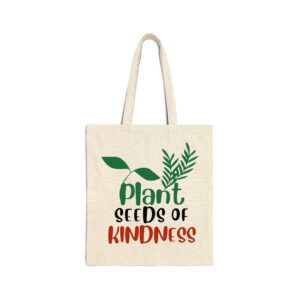Table of contents
African evergreen

Latin Name: Syngonium podophyllum ‘White Lightning’
Category: Hanging
Family: Araceae
Origin: Cultivar
Climate: Tropical humid
Growing Zones: 11-10
Care Instructions
The African evergreen (Syngonium podophyllum ‘White Lightning’) is a tropical humid plant that originates from Cultivar. This hanging plant belongs to the Araceae family and is well-suited for growing in USDA zones 11-10.
Complete Care Guide for African Evergreen (Syngonium podophyllum ‘White Lightning’)
Watering Requirements
The African Evergreen, or Syngonium podophyllum ‘White Lightning’, thrives best with a consistent watering schedule. It is essential to keep the soil evenly moist but not soggy. Water the plant when the top inch of the soil feels dry to the touch. During the growing season (spring and summer), this may mean watering once a week, while in the dormant season (fall and winter), you can reduce the frequency to every 10-14 days. Overwatering can lead to root rot, so ensure that the pot has drainage holes and that excess water can escape. If you notice yellowing leaves, it may be a sign of overwatering, while wilting leaves can indicate underwatering.
Light Conditions
The African Evergreen prefers bright, indirect light for optimal growth. While it can tolerate lower light conditions, insufficient light may result in slower growth and less vibrant foliage. Ideally, place your plant near a window that receives filtered sunlight, or use sheer curtains to diffuse direct rays. Avoid placing it in direct sunlight, as this can scorch the leaves and lead to unsightly brown patches. If you notice the plant becoming leggy or stretching towards the light, it may be a sign that it needs more light. Conversely, if the leaves are fading in color, consider moving it to a brighter location.
Soil Preferences
The ideal soil for the African Evergreen is a well-draining potting mix that retains some moisture without becoming waterlogged. A blend of peat moss, perlite, and orchid bark works well, providing both aeration and moisture retention. You can also use a commercial potting mix designed for houseplants, adding perlite or sand to improve drainage. Fertilization should be done during the growing season with a balanced, water-soluble fertilizer every 4-6 weeks. In the dormant season, reduce or eliminate fertilization, as the plant’s nutrient needs decrease.
Pests and Diseases
The African Evergreen is generally resilient but can be susceptible to common houseplant pests such as spider mites, aphids, and mealybugs. Regularly inspect the undersides of leaves and stems for signs of infestation. If you notice pests, treat them promptly with insecticidal soap or neem oil, ensuring to follow the product instructions carefully. Additionally, keep an eye out for fungal diseases, which can occur in overly humid conditions or with poor air circulation. Signs of fungal issues include leaf spots or mold. To prevent these problems, ensure good airflow around the plant and avoid overhead watering.
Special Care Tips
To maintain the health and beauty of your African Evergreen, consider the following special care tips: First, regularly wipe the leaves with a damp cloth to remove dust and enhance photosynthesis. This also helps prevent pest infestations. Second, if you want to encourage bushier growth, pinch back the tips of the stems to promote branching. Additionally, consider rotating the plant every few weeks to ensure even growth on all sides. Lastly, be mindful of temperature; the African Evergreen prefers temperatures between 60°F and 80°F (15°C to 27°C) and should be protected from cold drafts and sudden temperature changes. With these care tips, your African Evergreen will thrive and bring beauty to your indoor space.








